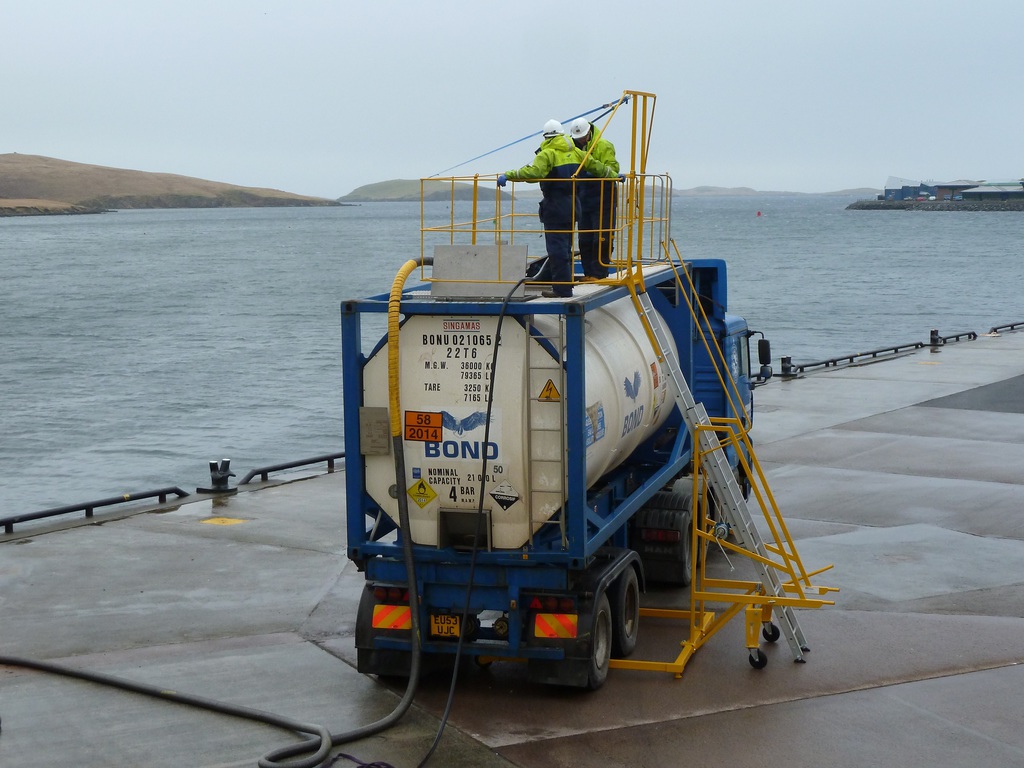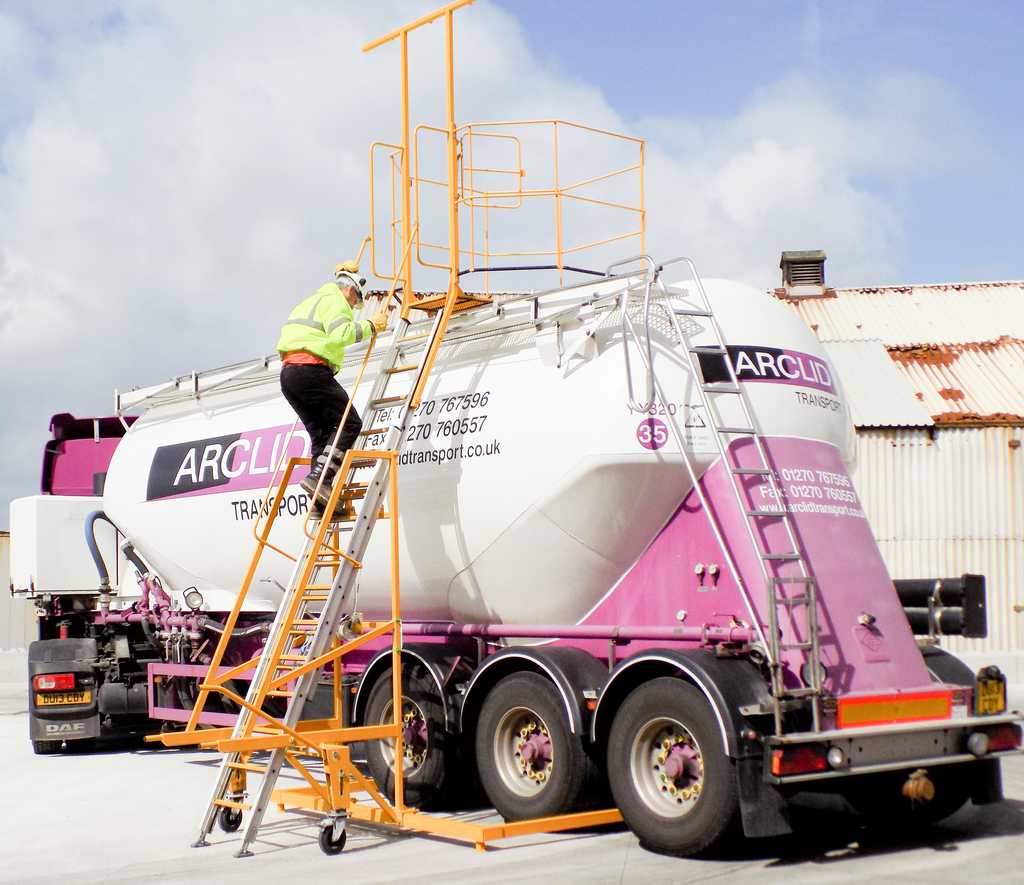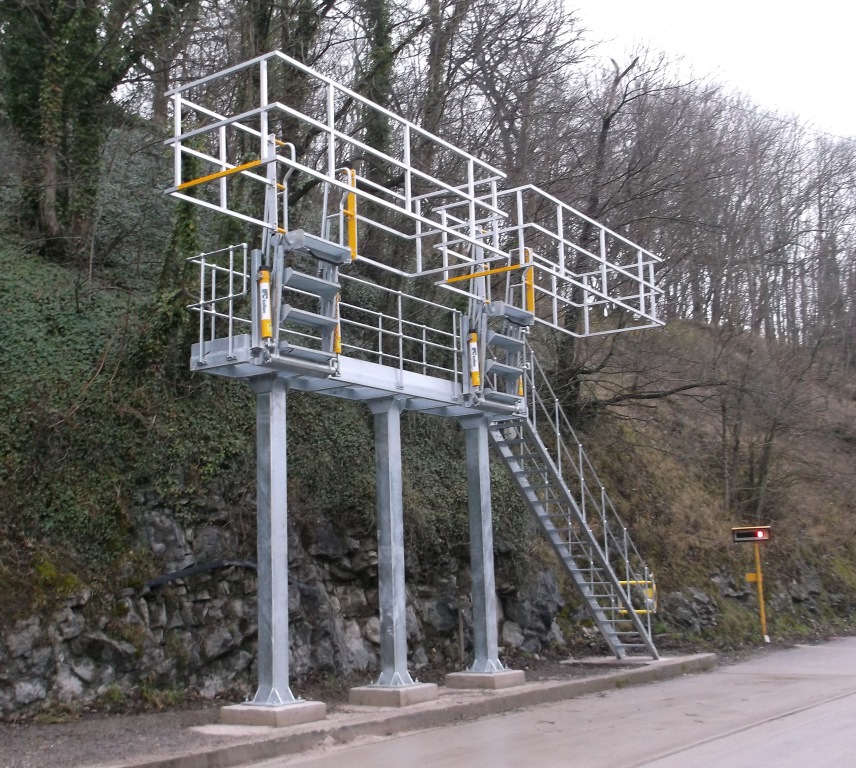
Kelly Rose
Editor

Kelly Rose
Editor
IFC has been involved in designing and manufacturing systems that allow bottom loading and unloading of hazardous and non hazardous products and safe access onto the tops of tankers for over 30 years and have always followed the principle that it is safer to stop someone from falling than to catch them when they do.
It is essential for potential buyers and operators to understand the implications of the choices they make when it comes to protecting personnel while they work at height on the top of road tankers according to IPC Inflow.
The following recommended best practices will help to give a better understanding of what site operators should be looking for from a Health & Safety perspective.
Fall Protection or Fall Prevention?
When installing new or reviewing existing work at height systems the first question to consider is: Should we focus on fall protection or fall prevention? There is a significant difference. Fall protection is the act of catching someone once a fall occurs and is effected through fall capture systems such as harnesses, lanyards and other personal protective equipment. The onus is on the personnel to be adequate trained to use the required PPE and for the equipment to be suitable for use, including regular inspections and certification for harnesses and lanyards. Fall protection is generally used in operations where access is only required on a temporary or irregular basis. It is typically a lower costoption than fall prevention, at least in the short term. Fall prevention is the act of preventing a fall from occurring in the first place and usually consists of fixed structures and equipment such as platforms, gantries and safety cages. To help determine which solution is most appropriate it is recommended to refer to the hierarchy of control published in the Chemical Industries Association document “Working on The Tops of Chemical Tankers”, which states “to prevent falls from tankers the following control measures need to be considered”: -
In many instances a combination of some or all of the above would be deployed around a site to offer the most suitable solutions, with the main focus being on options 1 & 2. The main drive should always be to minimise the amount of time spent on top of tankers by developing bottom loading and unloading systems in the guise of articulated arms and hoses. Where this is not possible the site should provide suitable gantry based systems to access the tops of tankers. With some careful thought andplanning, a single well designed fall prevention system such as a loading gantry with self-levelling folding stairs and operator safety cages that meet all site tanker requirements and allows the site to consolidate tanker loading and unloading into a single location can provide long term savings, both financially and operationally.
IFC has been involved in designing and manufacturing systems that allow bottom loading and unloading of hazardous and non hazardous products and safe access onto the tops of tankersfor over 30 years and have always followed the principle that it is safer to stop someone from falling than to catch them when they do. With this in mind IFC offers a range of solutions incorporating loading / unloading gantries and folding stairs fitted with safety cages / fences, which provide a safe perimeter around the top of the tanker to stop a fall from occurring in the first place
Tanker fall prevention systems:-
Multi-level Platforms – These variable height platforms are designed to offer a full working area from which the operator can access the top of the tanker through a series of removable floor panels, thus eliminating the need to stand on the tanker at all. An excellent option if you cannot guarantee the configuration, shape or size of the tankers.
Vertical Safety cages – The traditional way to ensure operator safety whilst working on top of a tanker. These fall prevention cages enclose the operator in a boxed, ‘pulpit’ style safety cage and come in various sizes from 1.4m square right up to total tanker systems enclosing the full tanker. This option also eliminates any need for fall protection systems or reliance on tankers with the correct railings.
Folding stairs - available in various guises to suit requirements. They can be supplied as part of a new loading gantry installation, or separately to bolt onto an existing set up; they fold for easy movement. They are self levelling and are an ideal replacement for the older style drop platform, which due to their slope are less safe, especially in wet & icy conditions.
Toptank tanker mobile access
Where fixed gantries are not practicable then a moveablesolution with the TopTank access system is suitable for sites with infrequent requirements for tanker top access and is ideal for sampling, inspection, venting, testing,and operating tank top equipment. This allows sites to maintain flexibility in receiving product via road tankers.
Manual handling
The issue of heavy manually operated folding stairs has become a hot health & safety topic in the past decade. Some older heavier stairs may have become too difficult to operate manually, usually due to the balance springs wearing out. However, a better understanding of the risk of injury through repetitive lifting of heavy loads and the stress of the physical action of operating the stairs has led to a requirement for an easily controlled powered lowering and lifting system. To meet this new need IFC has developed a pneumatic power kit and control panel to assist in the lowering and lifting of stairs and loading arms at the push of a lever. The system can be retro-fitted to existing stairs, providing an easy and cost effective upgrade. Additionally, a feature on the control panel can be engaged to keep the stairs in contact with the tanker top while filling to compensate for the weight increase of the tanker and as the tanker starts to sit lower on its springs.The air powered kit and panel are also offered as an affordable optional extra on any new stairs.




Unit 3
Ryder Way
Basildon
SS13 1QH
UNITED KINGDOM
01268 596 900